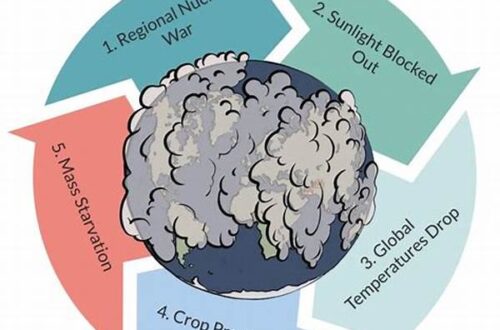Armed conflicts have long-lasting impacts that transcend the immediate human and political devastation, significantly affecting the environment as well. The ecological consequences of armed conflicts are considerable, often leading to environmental degradation that impacts both flora and fauna. These conflicts, whether international or civil, usually result in the destruction of natural habitats, pollution of ecosystems, and depletion of natural resources. Such detrimental effects merit thorough examination to comprehend their scope and to inform reconstruction and conservation efforts.
Environmental Degradation
The ecological consequences of armed conflicts are manifested through extensive environmental degradation. During warfare, natural habitats are often destroyed as a result of military operations. Forests may be devastated, waterways polluted, and soils rendered infertile due to the use of chemicals and explosives. Civilian areas may become littered with debris, leading to the destruction of local flora and fauna. This degradation is further exacerbated by the neglect of environmental regulations during times of conflict. Moreover, military activities such as movements of heavy machinery and establishment of military bases can cause irreversible harm to ecosystems. The use of landmines and ordinance results in further land degradation, making large areas uninhabitable for both humans and wildlife. It is imperative to address these ecological consequences of armed conflicts, as the recovery of environments afflicted by warfare requires extensive effort and time.
Impact on Biodiversity
1. The ecological consequences of armed conflicts often include a severe impact on biodiversity, as destruction of habitats leads to a loss of species.
2. Wars result in the displacement of wildlife, which disturbs the ecological balance and disrupts migration patterns.
3. The ecological consequences of armed conflicts may also involve the introduction of invasive species that further threaten native ecosystems.
4. Poaching and illegal wildlife trade often surge in conflict zones, amplifying the ecological consequences of armed conflicts on biodiversity.
5. The pollution stemming from conflicts affects water sources, causing declines in aquatic biodiversity, which is a significant aspect of the ecological consequences of armed conflicts.
Resource Exploitation
Armed conflicts frequently result in the over-exploitation of natural resources, exacerbating their ecological ramifications. Belligerents often exploit natural resources to finance military activities, leading to unsustainable extraction practices. Such practices can deplete resources like timber, minerals, and water, which are crucial for ecological balance and human sustenance. These activities can result in deforestation, soil erosion, and loss of arable land, further intensifying the ecological consequences of armed conflicts. Moreover, the prioritization of immediate military needs often leads to neglect of environmental protection measures, resulting in long-term ecological damage. This unsustainable exploitation of resources not only contributes to environmental degradation but also undermines the prospects of post-conflict recovery and development. Effective management of natural resources in conflict-affected areas is essential to mitigate these adverse ecological consequences and to promote sustainable peacebuilding initiatives.
Humanitarian Implications
1. The ecological consequences of armed conflicts extend into humanitarian realms by impacting local communities reliant on natural resources for survival.
2. Contaminated water sources, resulting from the ecological consequences of armed conflicts, pose significant health risks to civilian populations.
3. Food insecurity often arises due to land degradation and resource depletion, further underscoring the ecological consequences of armed conflicts.
4. Human displacement and migration can increase as populations are forced to leave areas affected by the ecological consequences of armed conflicts.
5. Recovery and reconstruction efforts are complicated by the long-lasting ecological consequences of armed conflicts, requiring substantial resources and planning.
6. Restoration of damaged ecosystems is often delayed, prolonging the adversities faced by affected communities and wildlife.
7. International cooperation is vital to address the cross-border ecological consequences of armed conflicts and to facilitate environmental recovery.
8. Legal frameworks need to be strengthened to hold accountable those responsible for ecological damages during conflicts.
9. Public awareness and engagement play a critical role in addressing the ecological consequences of armed conflicts and promoting sustainable practices.
10. The ecological consequences of armed conflicts highlight the interconnectedness of environmental health and human security, necessitating integrated approaches to conflict resolution and environmental protection.
International Legal Protections
Despite the formidable ecological consequences of armed conflicts, international legal protections for the environment during warfare remain limited. Existing frameworks, such as the Hague and Geneva Conventions, offer some protection, but they are primarily focused on human and military considerations. Global environmental treaties like the Convention on Biological Diversity provide frameworks for conservation but are not explicitly tailored to wartime scenarios. Therefore, there is a pressing need to strengthen and expand international legal mandates to address the ecological consequences of armed conflicts comprehensively. Efforts to integrate environmental protections into conflict laws are gaining momentum, reflecting recognition of the critical importance of preserving ecosystems even amidst warfare. Implementing such legal measures involves political will and international collaboration to ensure enforcement and accountability, which are crucial for mitigating the profound ecological consequences of armed conflicts and fostering resilience in conflict-affected ecosystems.
Technological and Scientific Interventions
Advanced technological and scientific interventions can play a pivotal role in mitigating the ecological consequences of armed conflicts. Remote sensing technology and environmental monitoring tools can help assess the extent of damage and identify areas in urgent need of rehabilitation. Environmental impact assessments, conducted with scientific rigor, can guide reconstruction efforts to ensure sustainable recovery and biodiversity preservation. Furthermore, innovative technologies in the fields of demining and waste management can contribute to the restoration of degraded landscapes. Research and development in ecological restoration techniques, such as reforestation and soil recovery, are essential in addressing the ecological consequences of armed conflicts. These interventions require substantial investment, international cooperation, and the sharing of expertise to successfully restore environments affected by warfare. The integration of technology and science into post-conflict environmental strategies is crucial for the rehabilitation of ecosystems and for supporting the livelihoods of communities dependent on these natural resources.
Summary
In summary, the ecological consequences of armed conflicts are as complex as they are alarming, resulting in the destruction of ecosystems, depletion of resources, loss of biodiversity, and significant humanitarian implications. Both flora and fauna suffer, as environments are transformed by warfare, putting immense pressure on existing ecosystems. The resultant environmental degradation requires concerted efforts to address, through both international legal reforms and technological interventions. Effective post-conflict recovery must include strategies focused on ecological restoration, sustainable resource management, and preservation of biodiversity. Acknowledging and addressing the ecological consequences of armed conflicts is critical for achieving long-term peace and sustainable development. Collaborative approaches involving multiple stakeholders are necessary to tackle these challenges and to uphold the intrinsic value of nature, emphasizing that environmental health is integral to human security. Only through sustained commitment and global cooperation can the profound ecological consequences of armed conflicts be adequately addressed, paving the way for resilient ecosystems and communities.





